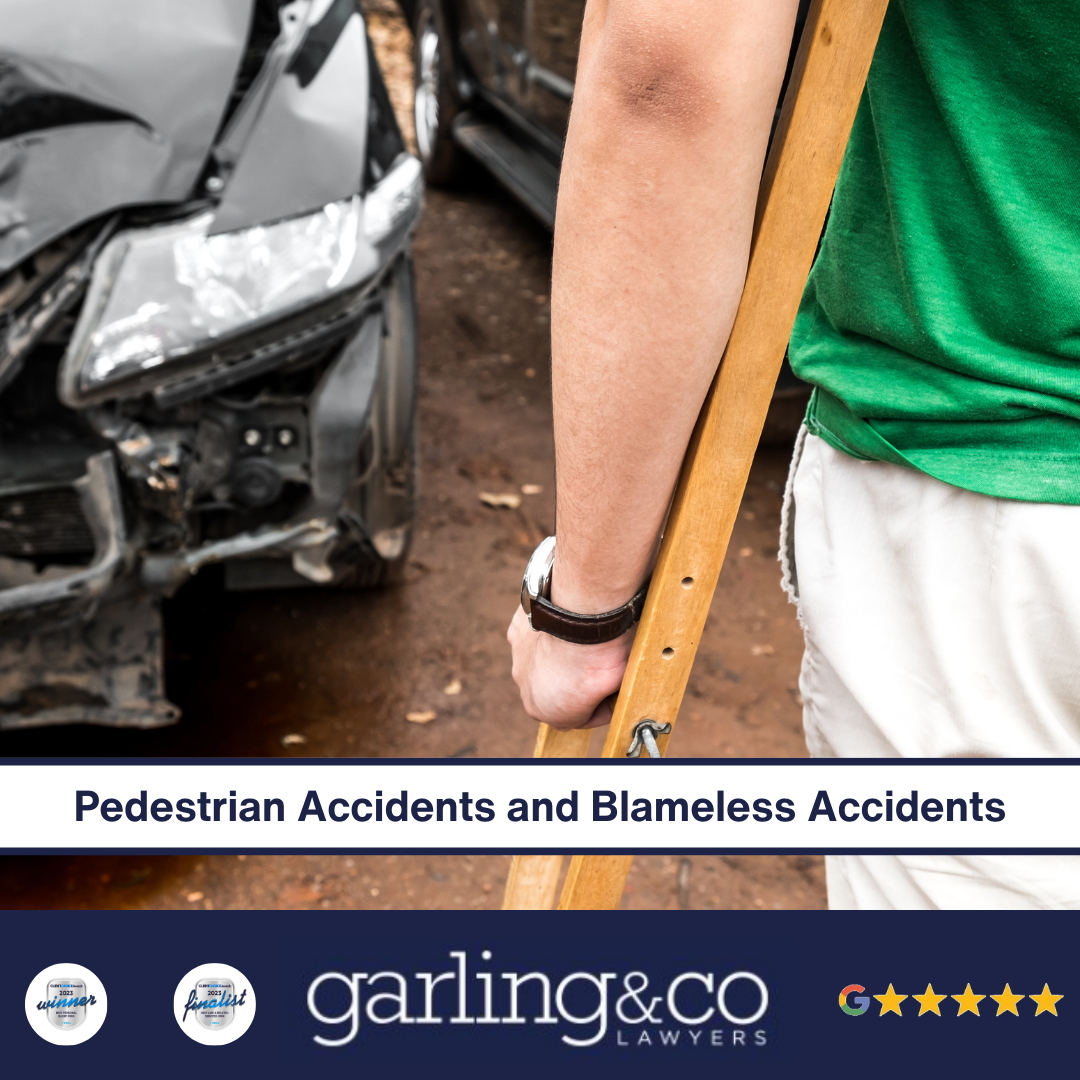
If you've been injured in a motor vehicle accident considered "blameless", you might be eligible for compensation.
The introduction of this section allows a person who sustains an injury as a result of a motor vehicle accident that was not caused by the fault of another driver and not caused by the fault of any other person to claim compensation under the Act. If this section is satisfied then compensation or damages are payable as would normally apply under the Motor Accidents Compensation Act.
The definition of a blameless accident
There are two parts to the definition of a blameless motor vehicle accident that need to be satisfied.
Firstly, you need to be able to satisfy that the motor vehicle accident was not caused by the fault of another driver of a motor vehicle. Such circumstances could include for example a tyre blow out on a car causing it to crash or a spider falling into the lap of a driver and the driver crashing into a tree or more commonly a pedestrian crossing a road without looking and the driver of the vehicle which collides with the pedestrian in not considered to be at fault.
Secondly, you must be able to establish that the accident was not caused by the fault of “any other person”. This “other person” does not include the injured person. The injured person can be partially at fault and still recover compensation. There would be limited circumstances where a motor vehicle accident is not caused by the driver of any motor vehicle but is caused by the fault of some other person. It has been argued that this may apply in circumstances where a young child is crossing a road and the parent fails to keep a watch over the child and the child is hit by a driver who is not considered at fault. The “other person” in this circumstance could be the parent who failed to keep a proper look out over their child.
This section has been used mostly to claim compensation on behalf of pedestrians and cyclists. For example, if you are a pedestrian and are struck by a vehicle you would allege two things:
- That your injury was caused by the fault of the driver that struck you or in the alternative;
- That if the driver is not at fault, then it is a blameless motor vehicle accident.
In either of these scenarios, the pedestrian would be able to recover compensation under the Act, subject to a reduction in damages by reason of the pedestrian’s own fault in causing the accident, known as contributory negligence.
The practical effect of this section means that most, if not all, pedestrians and cyclists who are struck by vehicles will be successful in a claim for compensation subject to a reduction in the amount payable due to any contributory negligence.
We acted recently in a case for a man who was crossing the road as a pedestrian and was hit and struck by an unidentified vehicle which did not stop at the scene. Our client could not recall the circumstances of the accident and was found in the gutter with multiple injuries. We alleged on behalf of our client that either the driver of the unidentified vehicle was at fault or alternatively this was a blameless motor vehicle accident.
In the end, we could not prove on the balance of probabilities that the driver of the vehicle was at fault because we did not know the circumstances of the accident as our client could not recall being struck by the vehicle however we were successful under the blameless accident provisions as the accident was not caused by the fault of the driver and it was not caused by the fault of any other person. The client received full compensation under the Act.
If you have been injured by a motor vehicle as a pedestrian or a cyclist then in almost all circumstances you will be able to recover compensation for your injuries.
Should you have any questions in relation to legal matters please do not hesitate to contact us.
- Complete our FREE case assessment form HERE
- Email us at info@garlingandco.com.au
- Give us a call on (02) 8518 1120












